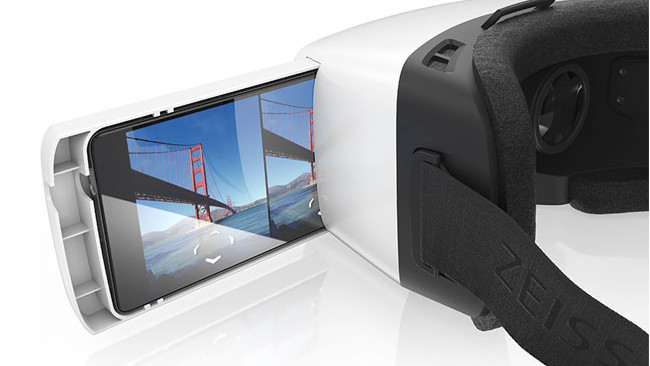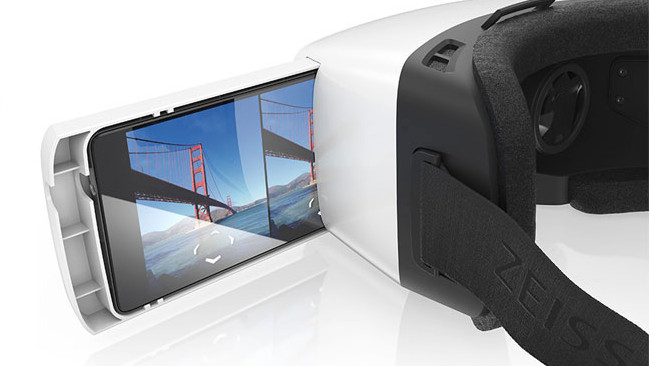
 Zeiss VR One
Zeiss VR One
Zeiss has created a virtual reality headset, but it may need to wait until the next generation of smartphones for its VR One to impact the industry.
When it comes to virtual reality headsets, the market has begun to take shape, with high-end offerings like HTC Vive and Oculus Rift at one end, budget-friendly Google Cardboard at the other end, and Samsung's Gear VR and Sony's upcoming Playstation VR somewhere in between. Of course, there's plenty of room for other competitors, like the intriguing Sulon X, which aims to merge VR and AR in one device via cameras that convey a stereoscopic view of the real world that seamlessly shifts to full immersion. However, one current product with an outstanding pedigree in the field of optics may excel in the future, as flagship phones integrate VR-friendly tech.
Zeiss' VR play
The $129 Zeiss VR One headset debuted last year, but it has yet to meaningfully penetrate the market, let alone the public's consciousness. Some early critics of the headset pigeon-holed the VR One as an expensive Cardboard-style viewer, but description really gives the product a short drift. Yes, the VR One lacks integrated circuitry and sensors of a device like the Samsung Gear VR, which uses its onboard electronics to effectively reduce the latency of the system, as compared with the sensors and capabilities of the Samsung Galaxy line of smartphones. Yet, after trying out the VR One at NAB this year, I think those early critics may have missed the point of what Zeiss is trying to accomplish.
The Zeiss VR One is a simple experience because that's what it was intended to be. The company has eliminated the need for dopter or pupil distance (PD) adjustments through an innovative optical design. Instead of the lenses focusing to a point, they focus to a flat surface, creating a larger focal area, meaning the VR One should work just fine regardless of user PD. The lenses are also physically larger than other systems and set back further to accommodate eyeglass-wearers, making them ideal for farsighted individuals who can't focus on at close distances without their own prescription corrective lenses.
The Zeiss VR One headset has another advantage: it's platform and device agnostic. The VR One can replicate Google Cardboard functionality with an optional magnet button, but the real beauty may be in its tray holders for smartphones. There are trays available for popular smartphones, like the iPhone and Samsung models, but owners of more obscure or exotics handsets are also in luck. For owners of off-brand phones with access to a 3D printer, there are downloadable files available so those users can print their own holders, designed specifically to the dimensions of their phones.
Just the beginning?
It will be interesting to see what comes of the Zeiss VR One. There is an SDK available for developers that will allow them to build apps that turn off some background processes of phones, to improve latency. Admittedly, when I used the Zeiss VR One on an iPhone and a Samsung Galaxy S6, latency was still a sticking point, but as phones improve and as future high-end models use VR-related features to differentiate the flagships from the mid-and-low tiers, latency could be less of an issue. If that happens, Zeiss's lack of integrated electronics may no longer be a minus, but a plus, cutting down on weight and complexity, delivering, quite possibly, a compelling mobile VR experience in the near future.
Or Zeiss may be using the VR One platform to showcase the optical advantage it can create for future collaborators, who are likely eyeing ways to improve their own headsets.
Tags: VR & AR


Comments